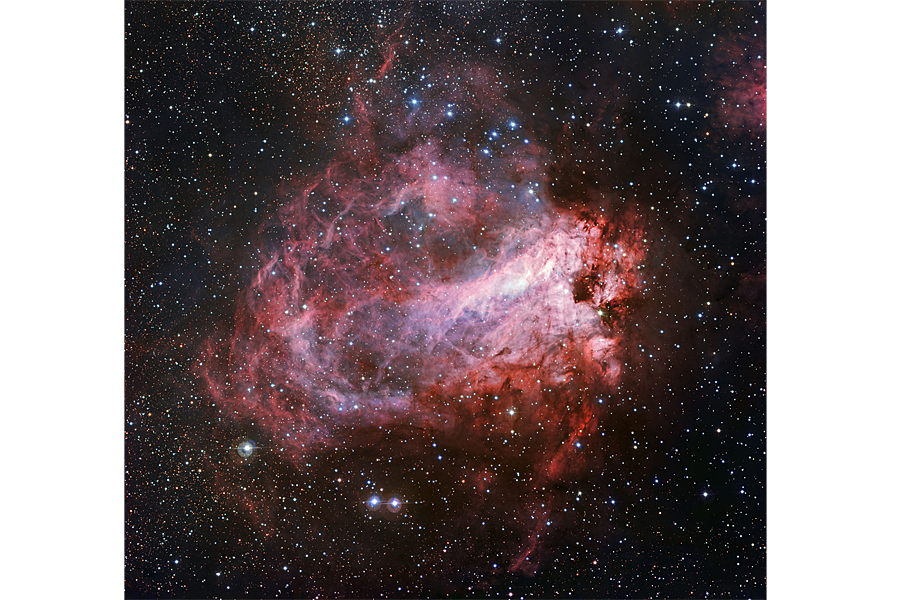Messier 17: Could a massive cosmic rose smell as sweet by any other name?
Loading...
"A rose by any other name would smell as sweet," said Juliet. Does that still apply if the rose is a giant cloud of gas and dust?
Officially named Messier 17, this spectacular nebula is now visible in stunning relief in a newly released photo from the European Southern Observatory's La Silla telescope in Chile.
The rose-hued stellar nursery has earned many colorful nicknames, including the Omega Nebula, the Checkmark Nebula, the Horseshoe Nebula, the Lobster Nebula, and the Swan Nebula. Whatever you call it, Messier 17 remains a gigantic hotbed of star-birth – one of the youngest and most active in our galaxy. Astronomers have counted nearly 800 young stars emerging in its center, with even more stars scattered across the whole nebula.
You can see Messier 17 in the constellation Sagittarius (The Archer), where the cosmic rose stands out as particularly bright against one of the darker regions of the Milky Way. It stretches 15 light years across and its gas has more than 30,000 times the mass of the Sun, astronomers estimate.
What gives this stellar nursery, located 5,500 light-years from Earth, its rosy hue? Glowing hydrogen gas.
Infant stars emit ultraviolet light that excites the hydrogen gas around them. That excited gas radiates in the pink to red wavelengths, bright enough to catch astronomers' eyes.
Messier 17's official name comes from Charles Messier, a French astronomer who searched the sky for comets. As he hunted, Mr. Messier also noted the locations of bright celestial objects that were not comets, so he wouldn't be confused. He numbered the radiant objects in his published astronomical catalog in 1764.
But Messier wasn't the first to spot the spectacular rosy nebula. Swiss astronomer Jean-Philippe Loys de Chéseaux had found the cosmic rose around 1745, but his work was not widely publicized, so when Messier independently discovered the same nebula later, the Frenchman received the credit.
Messier 17's many nicknames come from its appearance, which reminds some of the Greek letter omega, while to others it looks like a swan, a horseshoe, or a lobster.
The glow of this vast celestial rose is interrupted by darker spots and webs, caused by dust that blocks the light from the excited hydrogen gas.
Increasingly powerful telescopes have allowed astronomers to see more and more colors hidden in the nebula. When the ESO took a closeup six years ago, astronomers described a "fascinating palette of subtle colour shades across the image," caused by "different gases (mostly hydrogen, but also oxygen, nitrogen and sulphur) that are glowing under the fierce ultraviolet light radiated by the hot young stars."






